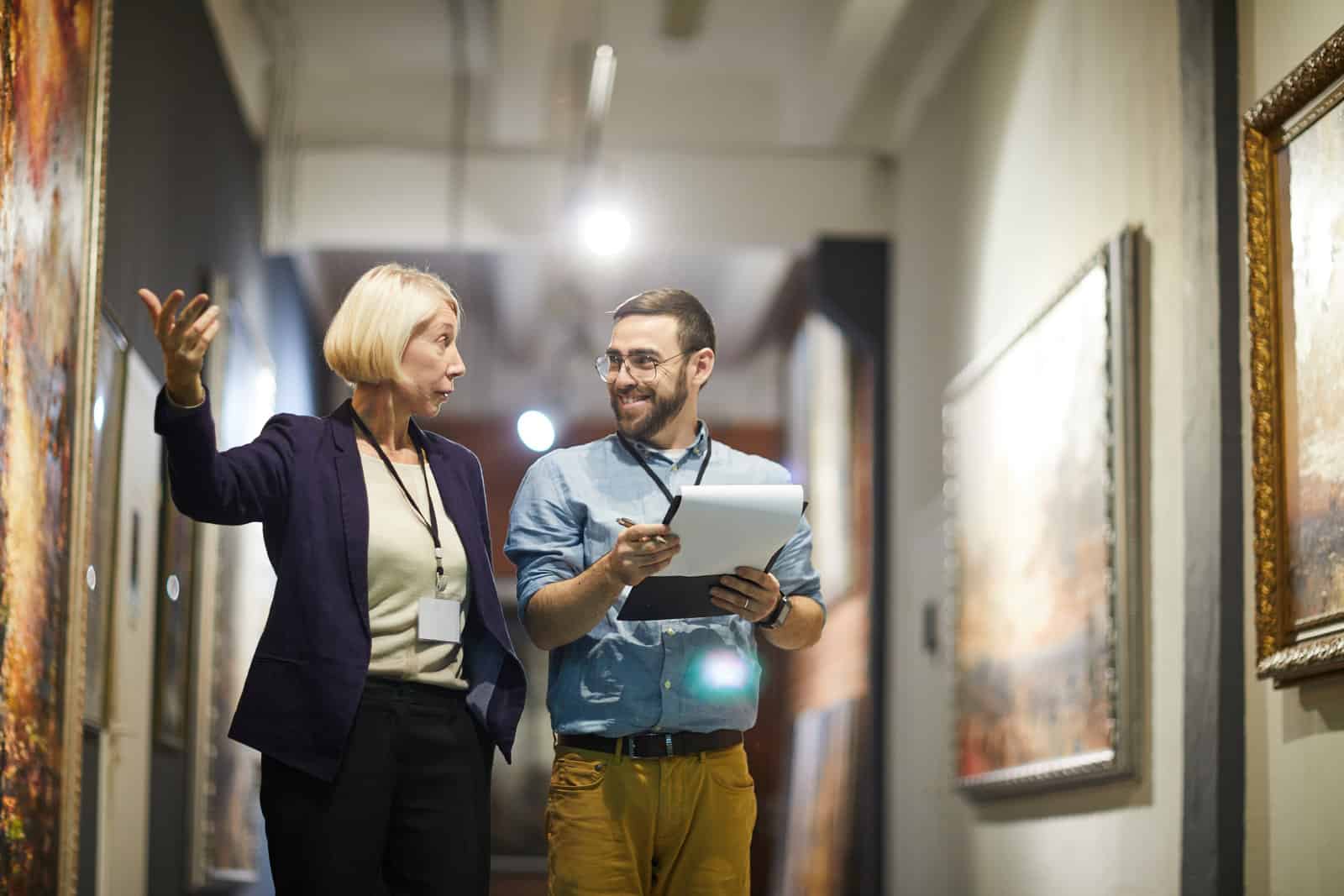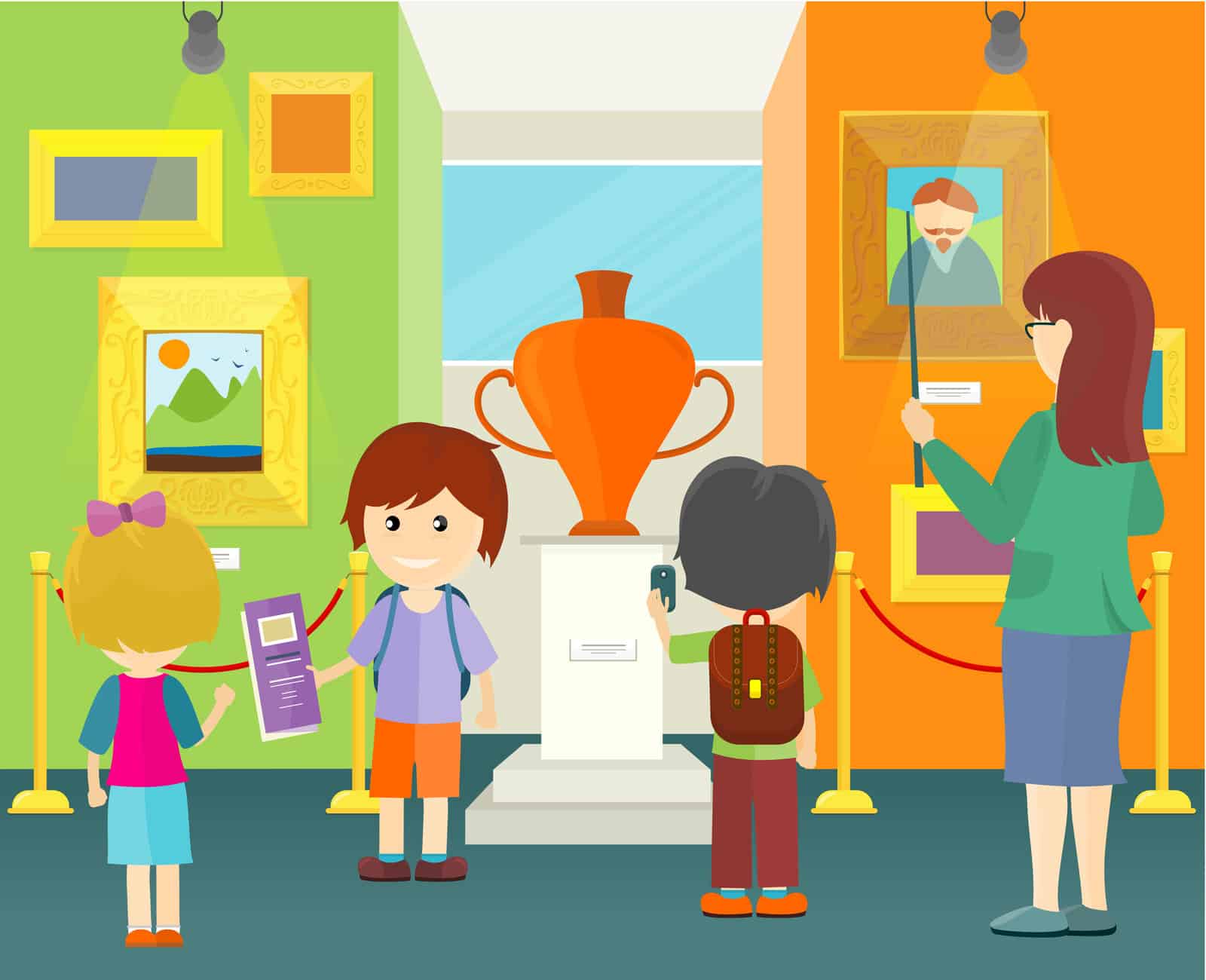
What is a Museum Curator’s Job? – Job Description for Kids & Fun Step-by-Step Guide to Make Your Own Exhibit!
Table of Contents
What is a Museum Curator’s Job?
The Job of a Museum Curator is to take care of the objects in the museum’s collections, research them, and present them in exhibits and exhibitions for the public. It is an important job of museums to make sure their objects are kept in good condition and that they are available to researchers, like historians or archeologists, and also to the public. Museums make sure that the stories and history of these objects are saved and kept for future people to enjoy. Museum Curators make sure that the stories of the museums’ objects are kept and told.

Key Responsibilities for a Museum Curator
- Researching museum objects – finding out more about them to better tell their story.
- Allowing others to access the objects – enabling research to take place and people to enjoy and learn from the collection.
- Organising and curating exhibits for the museum and exhibitions. Curators decide which stories to tell with the objects they have in the collection and help share the history of the collection through exhibitions.
- Talking to the public about their museum and collection. Curators help raise awareness of the objects in the museum and create events that get the public involved with the objects. After all the museum’s objects are kept safe for everyone to enjoy and learn from.
How to get a Job as a Museum Curator
You probably don’t have to think about getting a job for a long time yet but when you do what are museum curator job requirements?
Well, most curators start with an interest in museums or history from a young age. Studying history or art in school will help you build knowledge and skills you can use later as a curator. When looking to go into any museum job, volunteering is a great idea as it shows you are committed to museums and also gives you experience in different roles.
A lot of people who work in museums also have a university qualification that relates to their topic of curation. You can even do a whole degree on museums, a subject called Museum Studies, where you learn all about how museums work and the different roles in museum work. You can even take classes in museums with people already working there.
How to learn more about being a Museum Curator
One of the best ways to learn more about museum curators is through YouTube or museum websites, there you can find videos from their current curators. Part of the job of a curator is to talk to the public about their work so it’s a great way to learn more.
If you are on a school trip to a museum you may meet with a curator. This is another great way to hear about what its like being a Museum curator.
How to try out being a Museum Curator
Want to give curating a go and see if you enjoy it? There are a few cool ways to try out being a museum curator!
Museum programs that let you be the curator!
If you are lucky you can ask a parent or guardian to research your local museums, as sometimes museums allow local kids to create exhibits. There may be an event near you or an opportunity to arrange a school trip to try out curating. Ask your parents, guardians, or teachers if they can help.
The National Museum Warsaw in Poland created an exhibition called “Anything Goes” which was created by 6 teams of nearly 70 children. They created a massive exhibition of over 300 objects and the themes, labels, and set up were entirely decided by the children. This experiment allowed the children to interact more with the museum and allowed the museum to learn more about what children want from exhibitions.
On a smaller scale other museums let the public decide on temporary displays such as The Hunterian Stores in Kelvin Hall, Glasgow. They allow local people to design a display case every few months, these exhibits are placed on public display in the community display area of Kelvin Hall. To learn more about Kelvin Hall and their collection stores check out the video below:
Check out museums that let kids take over for the day:
The Organisation Kids in Museums in the UK arranges an annual event called Takeover Day this event is joined by many museums all over the country. These takeover days allow kids to come into the museum and have a say on what goes on in the museum. If you are interested in the jobs that go on in museums you may be interested in one of these events. Or you can have a parent or guardian to look for similar events at your local museum.
Make your own exhibition with toys or collectibles
A great way to try being a museum curator yourself is to create an exhibition at home! You can do the job of a curator for your own objects and present them in an exhibit. Why not try it out?
A Step-by-Step Guide to Making Your Own Museum Exhibition

Ideas for your exhibition
- Your favourite toys – you could use dolls, teddy bears, toy dinosaurs, or whatever you like!
- Interesting shells or stones you found on a walk.
- Family pictures for your own gallery.
- An art gallery of the best pieces of art you’ve made.
Step One – Choosing your Objects
Using things you have around the house pick 3-5 objects to display in your exhibit. You can add more objects if you can’t pick between then but try not to have more than 7 as it may clutter your display. Pick objects that you care about and think about the stories they have to tell. You may want to pick objects with a similar theme, for example, your dinosaur toys or your art works.
Don’t worry if you find it hard to choose, curators sometimes have millions of objects to choose from so they also have to try hard to pick which ones are going to be displayed.
Step Two – Decide on the exhibit’s story
What is your exhibit about? You are the curator and you get to decide what stories these objects tell. Are these your favourite toys? Are they all blue, why are they all blue and why is that interesting? Is this exhibit about your favourite presents? Maybe what you got for your birthday? Ask yourself all about these objects and find out what story they have to tell. Once you have an idea for the story you can move on to the next step.
Step Three – Organise your objects
Time to decide what order your objects will be arranged in and how you will display them. You could line them up from biggest to smallest. You could arrange them from your favourite to your least favourite. You could even arrange them in the order you made them if you are displaying art, like a timeline of your work.
Step Four – Write your Object Labels
Object labels are the small descriptions that sit under objects in museums to tell you more about that object. These pieces of writing tend to be short but include key information that tell the public about the object. These labels also include what is called ‘interpretation’. Interpretation is how museum curators tell the story of the object and how that object is interpreted by curators. This is influenced by their research but your interpretation can be just your thoughts and what you find interesting about the object.
Things to Include in your Object Labels
- The Title – What is your object called?
- What is it made of? – Is it a painting on paper? Is it a teddy bear stuffed with fluff?
- Who gave you this object? – Museums have to know where objects come from as this is an important part of their history and story, did you receive that object as a gift?
- Interpretation – Why you chose that object & What is that objects story?
Step Five – Install your Exhibition
Now you have your objects and labels you can decide where to put your exhibit. You may want to lay out your objects on the dining table so your family can see it. Or you could place it on a bookshelf in your bedroom. You can even use sticky notes, tape, or blue tack to stick your labels to the shelf temporarily. Make sure you pick a placement for your exhibit that allows you to enjoy the objects and read the labels.
Step Six – Share your Exhibit
Now that your exhibit is complete it is time to share it! A big part of what museums do is making sure that objects are available for people to enjoy and learn from. You, as curator of the exhibit, have the responsibility of sharing this new story with people. You can show your parents or guardians, your grandparents, or even your friends.
You should give them a tour of your exhibition and explain the story that it tells. You can even ask their opinion on the objects and if they have stories to tell about them.
To download these instructions for later click the link below.
Conclusion – What is the job of a Museum Curator?
A Museum Curator makes sure that the objects held by the museum are cared for and available to the public through display or through research visits. You can become a curator but you may have to go into further education such as a degree in History, Art or Museum Studies. You can also volunteer for museums when you’re older to build up your experience. Museum Curators are also story tellers and through the create your own exhibition exercise you saw how they use objects to tell stories.


Leave a Reply